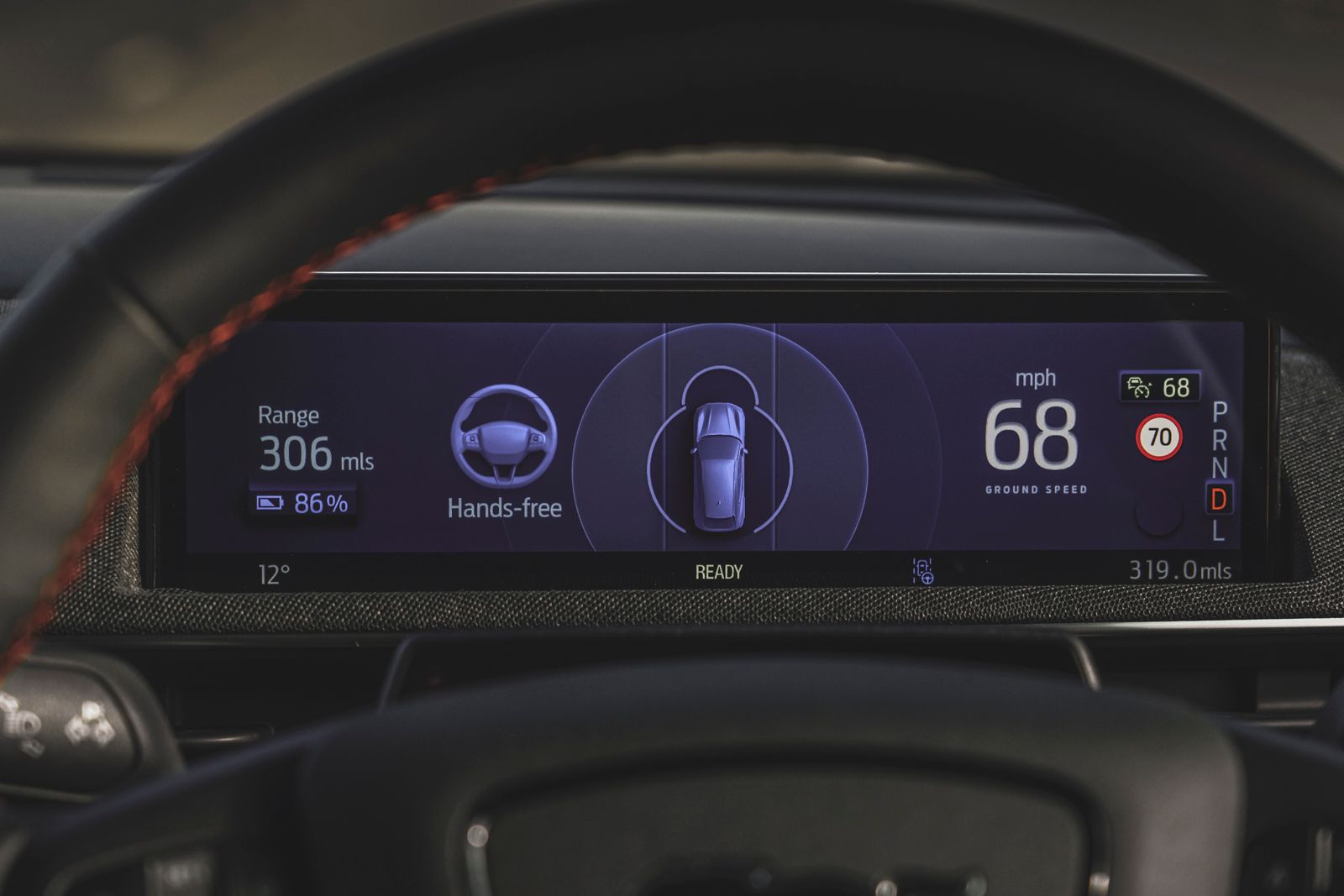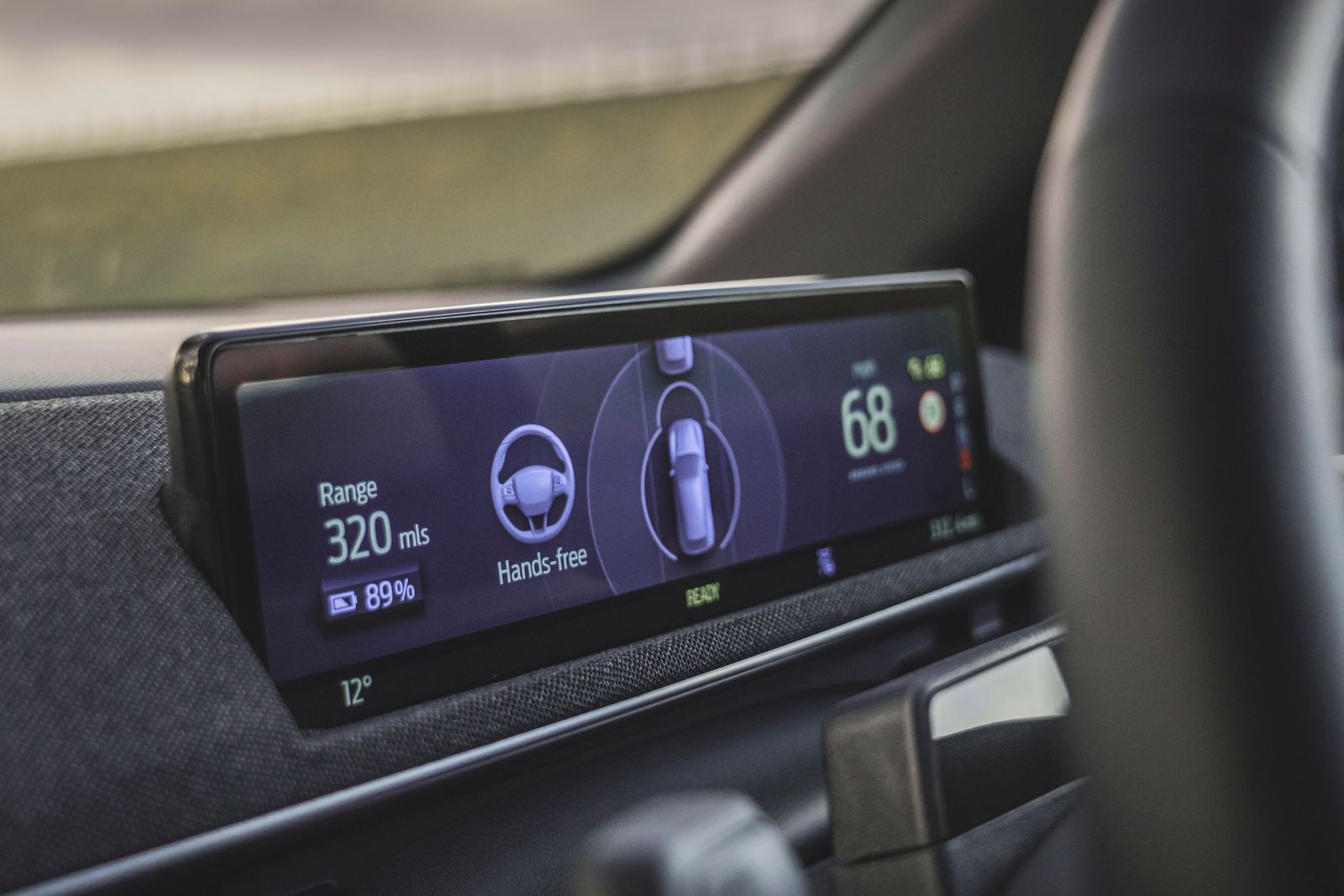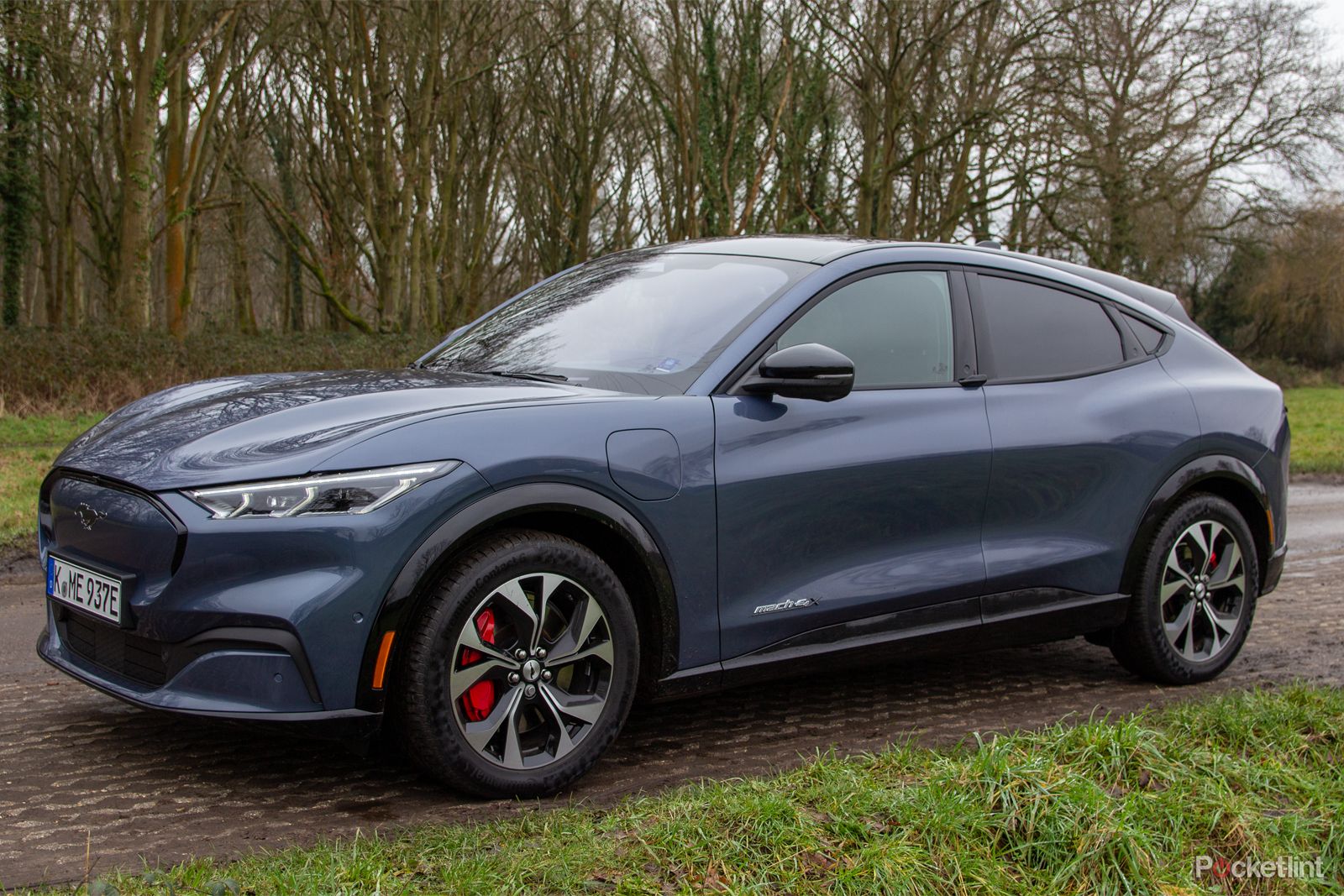Ford BlueCruise is a driver assistance system. Launched originally in the US and Canada in 2021, the system has enabled over 68 million miles of hands-free driving, on over 193,000 vehicles. It's also now spreading its wings outside North America, coming to the UK in 2023 - and being the first such system to get regulatory approval for use hands-off driving on the UK's roads.
So is a car with BlueCruise a self-driving car?
"Self-driving" is a term that's popular, but it's a term we need to be careful using. Technically, BlueCruise enables Level 2 hands-free driving. It's a driver assistance system, rather than being about the car driving itself. You still need to be in control of the car and you need to keep your eyes on the road, even if your hands can be off the wheel.
Level 2 refers to the level of autonomy the car can achieve, based on a system devised by the Society of Automotive Engineers. When someone refers to autonomy levels, this is what they are talking about. Level 2 isn't new because it covers a range of functions, technically that the car has systems that can handle all aspects of driving: steering, acceleration and braking. But importantly, the driver has to be able to intervene at any moment.
Isn't this the same as Tesla Autopilot?
Yes and no. Tesla Autopilot is a similar driver assistance system that will do many of the things that Ford BlueCruise will, but the important difference for those in the UK is that Ford has received regulatory approval in the UK for hands-off driving, whereas Tesla has not.
If you're in the US or Canada, however, then yes, BlueCruise is basically the same. In 2023 models that includes automated lane changing - another feature that Tesla is known for. However, for those in the UK, lane changing is not currently offered, you still have to do that manually.
How does Ford BlueCruise work?
BlueCruise is an extension of a number of existing systems that Ford already offers. The most important parts are adaptive cruise control and the lane-keeping assistant. Both of these will be familiar to drivers of recent vehicles, with adaptive cruise control managing the vehicle's speed and distance from the vehicle in front, while the lane-keeping keeps the car between the lines.
Both of these are critical, because from those systems, the car knows what's happening on the road. Being able to see the lines is critical to BlueCruise so it can steer the car and keep it in the correct position on the road, while adaptive cruise control keeps a safe distance from the car in front, while maintaining the correct speed for that road.
Yes, it can read the speed limit from road signs and adjust accordingly, but BlueCruise will work at speeds up to 80mph in the UK - not that you'll ever be driving that fast, of course. Like other cruise control systems, you can knock the speed up or down to your preference, just as you can adjust the distance it will keep from the vehicle in front.
By pulling these systems together the car can take over the controls and you can take your hands off the wheel and feet off the pedals, but you need to stay attentive to the road: there's a camera that monitors your head position and your eyes, so if you look away from the road for an extended period, or close your eyes, it will give you a warning to bring your attention back to the road. Beyond that, warnings escalate and if you fail to respond, the car will start to slow to a safe stop. Essentially, you need to stay in control of the car, with your attention to the road. However, if something happens to the driver, the car will bring itself to a safe stop.
Can I use BlueCruise on all roads?
No you can't. The system uses GPS geofencing defining what Ford calls Blue Zones. When you're in a Blue Zone, the system will be available and if you have cruise control activated, it will offer to switch to BlueCruise. In the UK, the Blue Zones cover over 2200 miles, which is the entire motorway network - basically, if it's a road starting with an M, you'll be able to use BlueCruise.
Ford said it's going to be expanding this to include other roads in the UK and that's likely to include A roads that behave more like motorways.
In the US, over 130,000 miles of highways are within the Blue Zones.
 How to engage Ford BlueCruise
How to engage Ford BlueCruise
BlueCruise is a really automated system, so you don't have to think about whether you're going to use it specifically. In reality, you'll engage cruise control and if you're in a Blue Zone and the conditions are met, BlueCruise will be offered to you automatically. But here's a step-by-step of what you need to do:
- Make sure you're on a Blue Zone road: the lines need to be clearly visible.
- Engage cruise control with a press of the steering wheel button.
- Cruise control will turn on at the speed you're travelling when you press the button.
- The driver display will show a blue balloon indicating that BlueCruise is available, you can press OK on the steering wheel.
- You'll get a message that you can take your hands off the wheel.
That's all there is to it. If, for whatever reason, BlueCruise cannot operate - if you're not in a Blue Zone or if the lines are clearly visible - then you'll remain in regular cruise control and have to keep your hands on the wheel.
What's it like driving with Ford BlueCruise?
We tested Ford BlueCruise in the UK at launch in the Mustang Mach-E. It's a system that's incredibly easy to use as we've detailed above. Once on the motorway, all it takes is a tap of the cruise control button and when BlueCruise was ready - a couple of seconds later - we were free to take our hands off the wheel.
At first this is a little alien, but this isn't the first time we've used such systems. Indeed, if you've taken your hands off the wheel when using some of the existing systems you'll know what it's like. We found the Mach-E reliably stayed in lane, steered smoothly around bends and adjusted speed to keep in position behind other vehicles. The advantage of using a system like this is you can relax a little more on longer journeys. If you're tired, it's an additional safety measure and over long drives, you'll find that something like BlueCruise is an additional measure to keep you safely on the road. Technically, you can't do anything else that distracts you from the road, so you can't legally use your phone or read a book, so you might find that you're left wondering what to do with your hands.
It's not hugely different in experience to the likes of Nissan ProPilot or BMW's Level 2+ system - or indeed Tesla Autopilot, but the omission of lane changing in the UK seems strange. It's offered by Tesla and Mercedes in the UK, for example, so why not Ford? The big difference in experience for UK drivers is that this is the only system you're allowed to legally use without your hands off the wheel. We suspect others will follow soon, but in the short term, Ford has something of a victory on its hands.
What cars will I be able to get BlueCruise on?
The Mustang Mach-E is the headline model for Ford BlueCruise. That was the original launch model in North America and it's the launch model in the UK. In the UK, it's available on 2023 models, so that's any built after November 2022.
In the US, it's also available on the Ford F-150 Lightning and Ford Expedition. There's a similar system available from Lincoln called Lincoln ActiveGlide, which is available on the Lincoln Corsair.
How do I get Ford BlueCruise?
BlueCruise is a subscription option. If you buy a new Mustang Mach-E, you'll get a 90-day trial in the UK, after which you'll have to subscribe for £17.99 a month through the Ford Pass app. You'll be able to subscibe month by month too, so if you only want it for the holidays, for example, you can just subscribe at that time.



